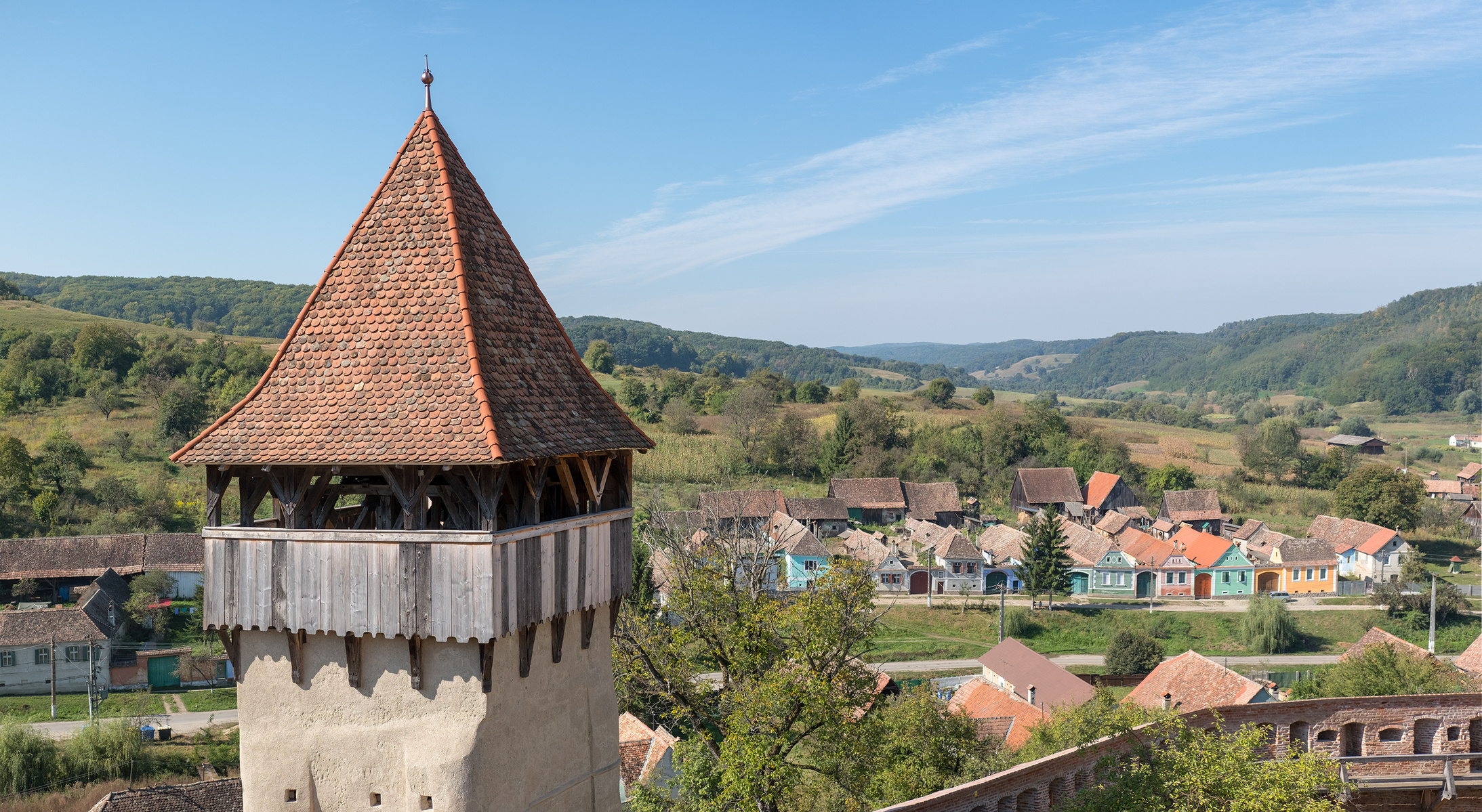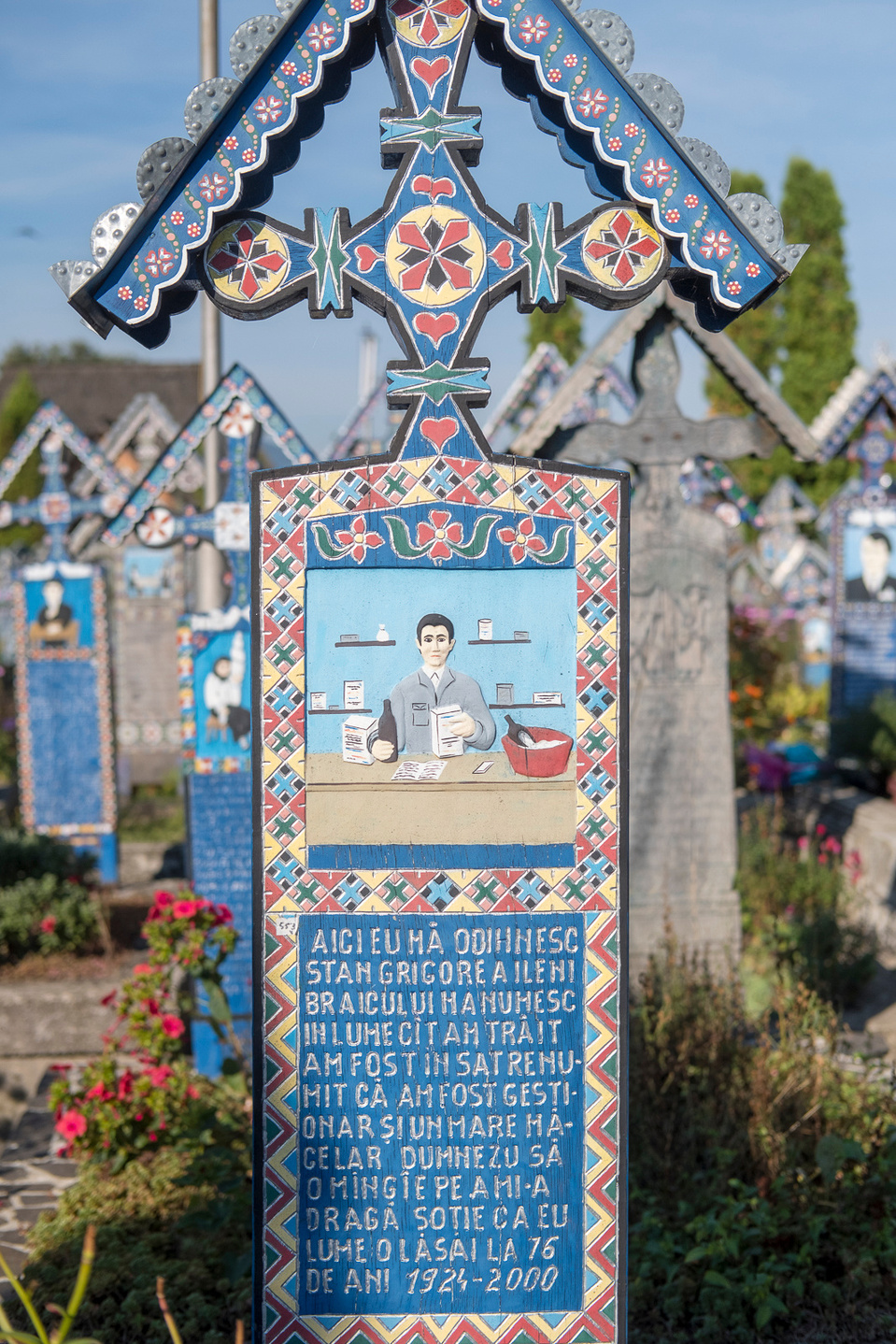Stone and Wood, Pomes and Plums
September 20, 2018After initially arriving on the overnight train from Budapest (which turned out to be better than expected) we collected the hire car that we now have for three weeks. We then headed straight out of Brasov to Sighisoara, both in Transylvania, where we spent the first week adjusting to another culture and exploring some of the adjacent region. Sighisoara itself is an attractive medieval fortified village that is still lived in and functional, although most of the commercial activity is now based in the newer parts surrounding it. There is a large tourist trade in many parts of Transylvania based upon the legend of Dracula and his real-life inspiration Vlad the Impaler, and Sighisoara is no different. You can partake of a “medieval breakfast” and similarly quaint experiences at some of the cafes and Dracula memorabilia is everywhere - and we haven’t even been to Bran Castle yet. Subsequently we couldn’t resist revisiting the Rocky Horror Picture Show for a blast from the past and some irreverent relief from the Transylvania mythos.
Romania, and especially Transylvania, has a history of invasions and occupations and thus many fortifications, including castles such as Bran, and the famous Saxon villages of this area with their fortified churches where the local populace would retreat to in times of need. The church’s protective role has possibly, at least in part, been responsible for shaping the deep seated religiousness of Romanian society, especially in rural areas. Although this is common to many (most) parts of Europe, here in Romania it is even more prevalent and is apparently the most religious country of the whole continent. Thus churches once again play a major role in the landscape and consequently my photographs (apologies if they are getting too much). We managed to visit a few of these villages which, on the whole are some of the more attractive ones in this part of Europe with colourfully painted houses and usually a town square and a church (or three). In between, the country is a mix of rolling farmland and mixed deciduous forest which is even now just starting to show the first signs of autumn foliage. At Viscri we went very early in the morning expecting only to see the outside of the church and were pleasantly surprised when the caretaker was out collecting walnuts (which she shared with us) and allowed us to wander aound the inside, alone and in lovely morning light, and free to boot.
For the second week we left Transylvania and headed to the small but bustling city of Baia Mare in the north of the country and the capital of the very traditional region of Maramures. Although completely different to Gozo in Malta in most ways, it shares the common characteristic of being described as “stepping back in time” with horse drawn carts and old traditions still a part of everyday life. Like Gozo though, this fails to take into account the cars, electricity, mobile phones etc., (as well as the carts having pneumatic tires from modern vehicles), and also like Gozo seems to imply that churches are a thing of the past as here there are at least two or three in every village!
Of the overabundant churches the most famous and most appealing to us were the wooden ones which, unlike the single poor example in Kezmarok, Slovakia, are impressive enough to warrant a second look. The irony (for me at least) is that they were built during the height of the Catholic Church’s reign because stone was considered the superior material and it was prohibited for the lesser opposition to use it in their churches, so the master carpenters of the area constructed churches that are far more attractive to my eye than the majority of stone ones.
We even visited a couple of monasteries constructed almost entirely from wood including Sapanta-Peri which claims to have the tallest wooden church in Europe (75m). They are impressive structures and I preferred the everyday working feel of the monasteries to the more pious facade of the churches, but after visiting some of the nicer examples of both they unfortunately started to become just more of the same.
One other peculiarity of the region is the so-called “merry cemetery” which has large painted wooden crosses inscribed with pictures and a summary of the person’s life story (or at least their version of it). Although they are all in the Romanian language they provided some entertainment looking at the variety on show and trying to guess what each one was about.
So far we have not been disappointed with Romania - the people are friendly (and the language is largely Latin based), the countryside is pleasant and varied, and the food is not bad at all with some good cheeses as well as an abundance of apples, pears and plums of excellent quality growing in the streets and gardens in many places that we’ve been so far. And one of my favourite vegetables, celeriac, is in season and of particularly fine flavour here too.
With over three weeks still left in Romania (but only one more with a car) we are looking forward to investigating more of the country including Moldavia, our next stop …

















































